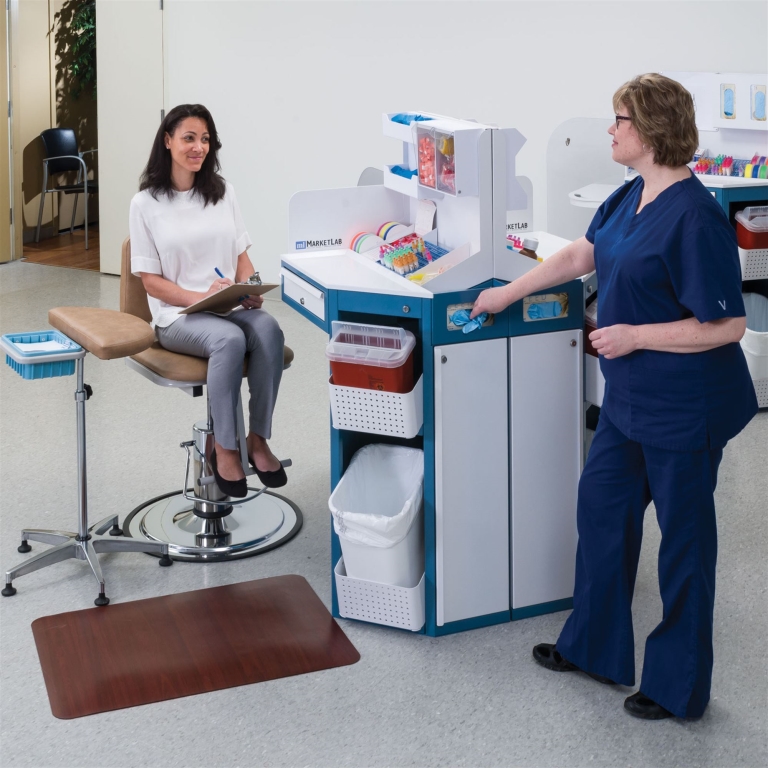How to Become a Certified Phlebotomist: Step-by-Step Training Guide for Aspiring Professionals
Embarking on a career as a phlebotomist can be a rewarding choice for those interested in the healthcare field. Phlebotomists play a crucial role in medical testing, collecting blood samples for diagnostic purposes. If you’re considering this healthcare profession, understanding the path to certification, required training, and practical tips can help you succeed. In this thorough guide, we’ll walk you through each step to become a certified phlebotomist and lay out the essential knowledge needed for a prosperous career in this field.
What Is a Phlebotomist?
A **phlebotomist** is a healthcare professional trained to draw blood from patients or donors for medical testing,transfusions,or research. Their responsibilities include patient preparation, specimen collection, and ensuring safety and comfort during procedures. As a vital link in the healthcare chain, certification provides credibility, enhances job prospects, and ensures compliance with industry standards.
Why Become a Certified Phlebotomist?
- Increased employability: Certification makes you a more attractive candidate to employers.
- higher earning potential: Certified phlebotomists generally earn higher wages.
- Enhanced skills and knowledge: Training courses equip you with essential techniques and safety protocols.
- Professional credibility: Certification demonstrates your commitment and proficiency in the field.
Step-by-Step guide to Becoming a Certified Phlebotomist
Step 1: Meet the Basic Eligibility Requirements
Before diving into training, ensure you meet the basic eligibility criteria:
- Minimum high school diploma or GED equivalent
- At least 18 years old
- Basic understanding of medical terminology and anatomy (helpful but not always mandatory)
- No criminal record relating to health or safety violations
Step 2: Enroll in an Accredited Phlebotomy Training Program
Selecting the right training program is crucial. Look for courses accredited by recognized organizations such as the National Accrediting Agency for Clinical Laboratory Sciences (NAACLS) or American Society for Clinical Pathology (ASCP). A good program covers:
- Anatomy and physiology
- Blood collection techniques
- Safety and infection control
- Patient interaction skills
- Legal and ethical considerations
Step 3: Complete Phlebotomy Training and Hands-On practice
Training usually spans from 40 to 120 hours, including both classroom instruction and practical experience. Practical training is essential to develop skills like:
- Capillary punctures (fingersticks)
- Proper specimen handling and labeling
- Patient communication and comfort
- Use of special equipment and safety gear
Step 4: Obtain Required Clinical Hours
Many certification boards require a minimum number of supervised blood collection procedures, often ranging from 50 to 100 successful draws. This hands-on experience builds confidence and competence.
Step 5: pass a Certified Phlebotomy Exam
To earn certification, you must pass an exam administered by recognized certifying bodies such as:
- Pennsylvania State Certification (if applicable)
- National Healthcareer Association (NHA) Certified phlebotomy Technician (CPT)
- American society for Clinical Pathology (ASCP) Certification
The exam typically includes multiple-choice questions focusing on blood collection techniques, safety procedures, patient interaction, and lab regulations.
Step 6: Maintain Certification and Continue Education
Most certifications are valid for 2-3 years and require continuing education credits (CEUs) for renewal. Staying updated with new techniques and standards enhances your professional profile.
Benefits of Being a Certified Phlebotomist
- Better job security and career advancement opportunities
- Access to a wider array of healthcare settings: hospitals, clinics, blood banks, wellness centers
- Higher earning potential compared to non-certified counterparts
- Professional recognition and credibility
Practical Tips for Aspiring Phlebotomists
- Choose an accredited training program to ensure quality education.
- Gain as much hands-on practice as possible during training.
- Develop excellent interpersonal skills to make patients feel comfortable.
- Adhere strictly to safety protocols to prevent needlestick injuries or contamination.
- Join professional associations like the National phlebotomy association (NPA) for networking and resources.
Case Study: From Student to Certified Phlebotomist
| Step | Action | Outcome |
|---|---|---|
| 1 | Enrolled in an accredited program | Gained comprehensive knowledge and practical skills |
| 2 | Completed 80 hours of clinical practice | Built confidence in blood collection techniques |
| 3 | Passed the certification exam | Received national certification as a phlebotomist |
| 4 | Nailed job interview at local hospital | Started a thriving career as a professional phlebotomist |
First-Hand Experience: Tips from Certified Phlebotomists
“Patience and compassion are key. Always explain procedures to patients and ensure they’re comfortable. Remember, your calmness can ease their anxiety,” shares Lisa M., a certified phlebotomist with 5 years of experience.
Conclusion
Becoming a certified phlebotomist is an achievable goal with the right training, dedication, and adherence to industry standards.By following this step-by-step guide, aspiring healthcare professionals can navigate the certification process smoothly, opening doors to a rewarding career in medical diagnostics and patient care. Keep learning, practicing, and connecting with industry peers to stay ahead in this vital healthcare role. Your journey to becoming a certified phlebotomist starts today – take the first step now!
